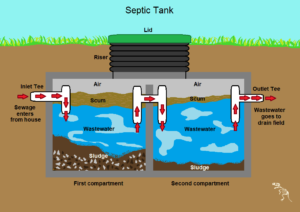Identifying pests is the first step in any control effort. Correct identification allows you to determine basic information about the pest, including its life cycle and when it is most susceptible to control.
Physical controls include barriers, fences, traps, and other devices that prevent pests from entering an area. Changes to the environment that deter or limit pests (e.g., altering water availability or light levels) are also included. Contact Springfield MO Pest Control now!

A preventive approach is the most desirable way to manage pests. This includes routine inspections for pest activity, identification and correct labeling of plant materials and the use of physical and mechanical controls that alter environments and eliminate food, water or shelter sources. These include screens, barriers, netting, traps and electrical devices. Chemicals used for prevention must be applied safely and only as directed on a product label. Foggers and illegal spraying of any kind are not recommended and can cause health problems and property damage.
Many pests are attracted to the same things humans are, such as food, water and shelter. To make a property less attractive to pests, regularly clean areas and dispose of trash promptly, keep weeds, grass and other plants trimmed, and seal cracks, gaps and crevices in outdoor structures. Indoors, keep counters and sinks clean and sanitary, store foods in airtight containers and remove garbage regularly.
Other prevention measures include removing water sources and eliminating places for pests to hide and lay eggs. For example, keep doors and windows closed as much as possible, repair leaky faucets, and clean clogged drains. In some cases, a pest population may reach a level where control is needed. Threshold-based decision making is a process that considers the number of pests, their impact and the time frame in which they must be controlled. For example, a few wasps in the yard may not warrant action while a huge infestation in the house needs to be addressed immediately.
Monitoring and correct identification of pests is important because it determines if they can be tolerated or if they need to be controlled. The information gathered allows you to select the best control methods at the right time for the situation. This will also help you reduce the amount of chemicals that are used and create a safer environment for all living organisms, including people. Monitoring and identification also helps you identify when a pest is an unwanted visitor, such as observing scurrying sounds in the walls at night. This is an indication of a serious problem that must be dealt with immediately.
Suppression
The goal of suppression is to reduce pest numbers to a level that will cause less harm than would occur if the population were allowed to continue growing. Suppression may be achieved through a combination of prevention and control methods. The strategy that works best for you will depend on the kind of pest you are dealing with and how serious the damage has been.
Biological controls rely on natural enemies-predators, parasites, and disease organisms-to limit pest populations. These organisms normally occur in nature, but you can augment their number and effectiveness by introducing them in places where they are needed. The classical biological control approach involves breeding and releasing these organisms, either in small quantities on a regular basis or in large batches, called “inundative releases.”
Predation, parasitism, competition, and herbivory among native plants and other organisms can limit pest growth. In addition, weather conditions affect pest activity. Rain, cool temperatures, or prolonged drought can reduce pest populations by killing them or by limiting their ability to reproduce.
Some of these organisms are very specific, limiting the number of different kinds of pest they can eat or infect. The predatory mite Amblysieus swirskii, for example, feeds on several species of insects that are considered pests but is not effective against green June beetle grubs.
Other types of cultural controls can also help to prevent the emergence or buildup of pests. These include altering soil fertility, reducing plant water stress, and changing irrigation practices to minimize root diseases.
Chemical options for controlling pests include herbicides to kill weeds, insecticides to kill insects, and fungicides to kill fungal pathogens. These are typically applied through sprays, drenches, or dusts. It is essential to select and use chemicals that will not harm beneficial organisms or people, and that are properly used according to the label.
In general, most pests are regulated by a density-dependent mechanism that requires a moderate reduction in the number of adults that survive and produce to maintain an equilibrium population size. However, if you can dramatically reduce the average reproductive rate of a pest population, you can achieve eradication.
Eradication
A pest control plan must focus on not only eliminating infestations but also preventing them from returning. A comprehensive pest management program should include regular inspections of facilities by experienced technicians, maintenance of traps and other pest capture devices, fumigation and insecticidal treatments, sanitary practices, reporting structures, pest surveillance, review and trend analysis and contractual guarantees and insurances.
In addition to causing structural damage, certain kinds of insects and rodents can carry or transmit vector-borne diseases (such as malaria, West Nile virus and rabies), allergies, bacterial contamination and disease from other microbes. These can make living in a property uncomfortable, dangerous or even deadly.
While pesticides are intended to be toxic to the target pest, they also can be toxic to people if misused or handled improperly. Children, older adults and individuals with compromised immune systems are particularly susceptible to such risks.
Pesticides can’t eradicate some pest problems because they often don’t kill off the pest at every stage of its life cycle. For example, a flea infestation might require chemicals that can kill adult fleas but not eggs and larvae, pupae or nymphs.
Eradication is a process that involves removing the pest population to the point where it can’t sustain itself. This can be done by trapping, baiting, spraying or applying a biological agent such as nematodes.
Prevention of Pest Infestations
The best way to prevent infestations is to make it difficult for them to develop in the first place. This includes fixing broken windows and screens, ensuring doors close completely, installing sweeps and astragals to fill gaps under and between door frames and sealing wall and ceiling penetrations. It also means lining storage bins and other containers where food or trash is stored with garbage bags, cleaning outdoor trash receptacles regularly and keeping them out of the reach of wildlife.
It is also helpful to remove scraps of food from the house, as this will discourage pests from looking for a meal inside. And, if there is a problem with flies or other biting insects, keep the kitchen well-ventilated and use flypaper, lures or baits to catch them. For a more natural approach, try sprinkling the area with clove oil or placing onion slices in areas where flies gather.
IPM
IPM (Integrated Pest Management) is an effective, ecological approach to managing pests and their damage. This is an established practice used by growers, home gardeners and green industry professionals for decades to minimize costs and environmental risks associated with the use of chemicals. It can be utilized in agricultural, structural and landscaped areas. It combines preventive methods, including inspection and monitoring, with identification of pests and their damage, and with a combination of biological, cultural and mechanical controls. When the need arises, pesticides are used only after careful consideration and with established guidelines to reduce risks to people, pets and beneficial insects.
Integrated Pest Management practices provide many other benefits aside from pest control. They save money, promote environmentally responsible practices and often provide health benefits. For example, the weatherization of buildings can cut energy bills and reduce moisture problems that lead to pests. Similarly, selecting plants that are well-suited to a site and its challenges can help avoid disease and insect attacks.
Prevention is the first step in an IPM program. This involves the selection of plants and structures that are less likely to attract or harbor pests, the installation of physical barriers, such as fences and screens, and other preventive measures. Sanitation and pest-proofing techniques, such as keeping garbage bins tightly closed, sealing openings around pipes, and removing food sources and shelters, also are part of an IPM plan.
When monitoring, identification and action thresholds indicate that pests have reached an unacceptable level, less-risky methods are employed to control them. These can include pheromones to disrupt mating, fungicides and other chemicals to inhibit fungal growth, or traps and barriers to prevent pest entry. If these options fail, more-potent and targeted pesticides are used with care to minimize risks.
IPM programs require ongoing maintenance, and their success depends on the diligence of the operator. It is important to keep records of pest traps and monitoring, and to communicate with building occupants about IPM tactics so they can assist in the effort to prevent pest infestations and report pest sightings promptly. The Illinois Structural Pest Control Act [225 ILCS 235] requires that public schools and licensed day care centers, when economically feasible, implement an IPM program.








